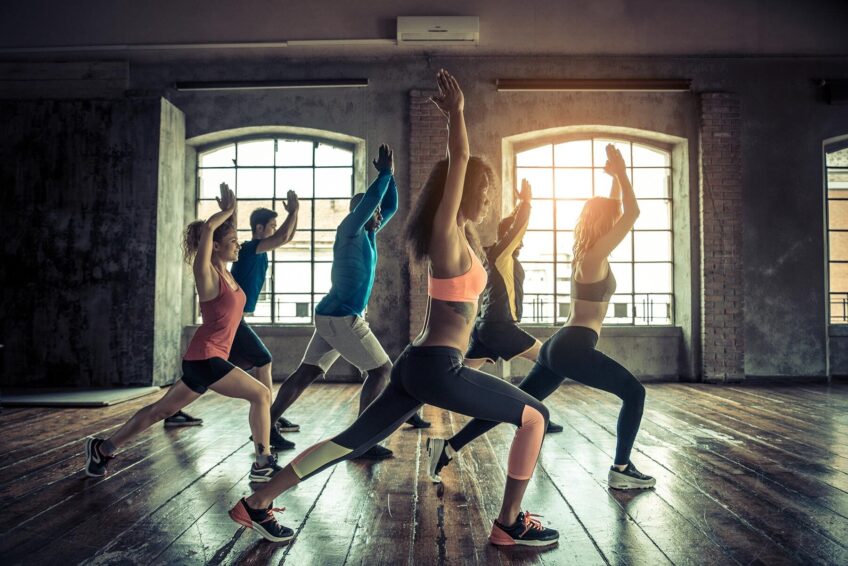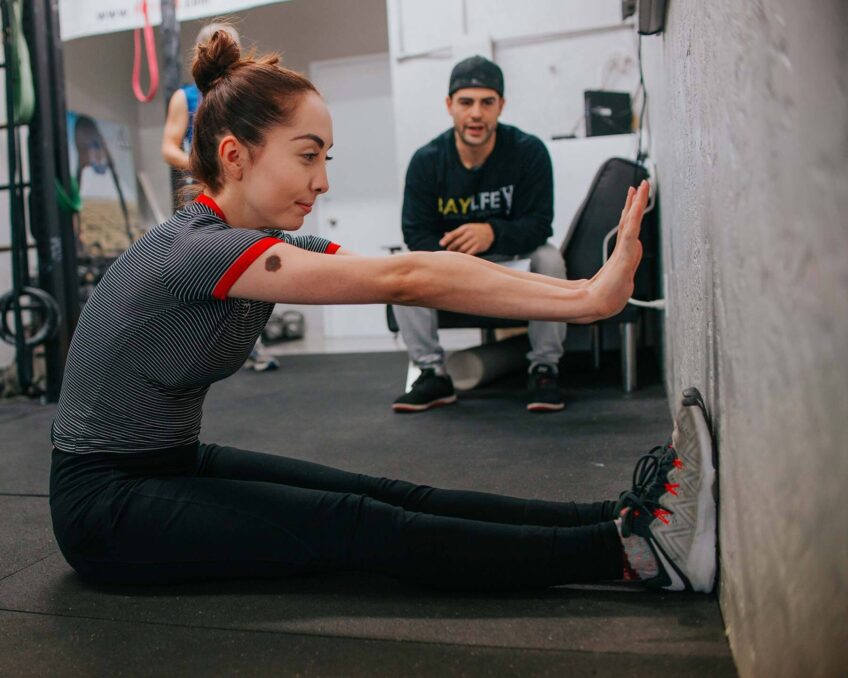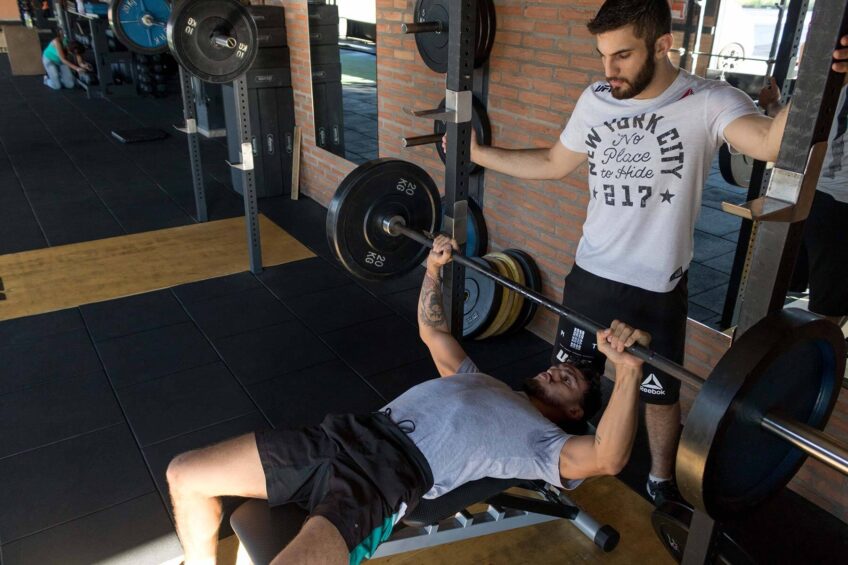How Do I Start a Fitness Training Routine?
Sometimes, learning how to get started is the most challenging part. Here are some fitness tips to get you going with a fitness training routine.

Whether you’re new to exercise or have been sidelined for a while due to injury, this article is for you. When you’re in a good rhythm, exercising regularly, and eating well, it’s easy to make small adjustments and fine-tune your routine.
But if you’ve been off the treadmill (so to speak) for a while, it can be challenging to know how to get started again.
Like me, I’m sure you know how important it is to get off the couch and get active.
I, for one, am definitely interested in sleeping better, feeling happier, and working smarter. But it’s not always that easy, with research showing that around 50% of people who start a new workout routine quit within the first six months.
So, how can you start a training routine that you’ll be able to stick to in the long run?
Here’s what you need to know to start a training routine that you can stick to:
Set Up a Realistic Routine
There’s no point in setting a goal of one hour a day of exercise if you’re not fit enough or don’t even have 30 minutes spare. So, before you dive into exercise, you need to:
Assess Your Current Fitness Level
Before you start exercising, it’s helpful to have an idea of your baseline fitness because it will make it easier (and more motivating) to track your progress.
Some ideas include:
- How long it takes to run a mile
- How many push-ups or sit-ups you can do
- How long can you plank for
- How close you can get to touching your toes with straight legs
- The circumference of your waist
- Your BMI
Start Slowly
Be patient! If you’re unfit, you must start slow and cautiously progress. Nothing is more demotivating than injuring yourself just as you’re getting into a new training routine.
Starting slow might simply mean taking a walk around the block. Be comfortable knowing any micro-step towards your fitness is a win.
Set Rest Days
In the beginning, you need to check in with your body regularly, paying attention to any pain or areas where you struggle. And everybody needs a rest day at least once a week.
Incorporate Exercise into Your Day
You can get creative here, maybe take the stairs instead of using the elevator, watch your favorite show at the gym on the treadmill instead of on the couch, or walk to the shops instead of driving.
When you think about it, you’ll be amazed at the many small activities that you can do daily that will improve your fitness.
Mix it Up
To get the most out of a routine and to keep things interesting, it’s ideal to have a diversified training routine that includes aerobic fitness, strength training, core strength, and stretching.
Aerobic Fitness
Cardio is usually the first element that is built into an exercise routine. Aerobic activity is any physical activity that uses large muscle groups and increases the heart rate. This could be walking, running, swimming, dancing, or even housework (if you’re willing to put your back into it).

According to the US Department of Health and Human Services, we need to get at least 150 minutes of moderate aerobic exercise per week (or 75 minutes if you do intense exercise).
And the exercise should be spread over the week, not done in a single session. One hundred fifty minutes might seem like a lot, but it’s only 25 minutes a day, and again, it could be just a walk around the block.
Even the smallest amount of physical activity can make a difference, especially if you can do ten minutes twice daily.
There are many benefits to doing regular aerobic activities that cause your heart to beat faster and increase the flow of blood to your muscles. As your aerobic fitness increases, you’ll find it easier to complete your daily activities, your risk of injury will be reduced, and your baseline energy levels will increase, so you’re always ready for unexpected physical challenges.
And, if you’re looking for a way to introduce more of a challenge to your cardio, why not try HIIT (high-intensity interval training), which is where you alternate between short bursts of intense exercises and alternate with recovery periods?
Strength Training
There’s a common misconception that strength training is for men, but it can add massive value to both men and women by increasing bone strength and muscular fitness (as well as helping with weight loss).
You don’t need to join a gym to get your twice-weekly strength training sessions; you can buy a set of resistance bands or free weights, make your weights from plastic bottles filled with sand, or use your body weight (by doing push-ups, pull-ups, and squats).
Core Strength
As you learn more about the importance of core strength for posture and relief from back pain, you’ll become more committed to incorporating this into your exercise routines. There are so many benefits from having a strong core that will positively impact your exercise training and spill over into your everyday life.
Core exercises include planks, sit-ups, and exercises using a fitness ball, and yoga and Pilates classes often focus on this vital area.
Stretching
Staying supple, especially as you get older, will greatly improve your quality of life. There are many types of stretches, including yoga and Pilates, but even a few stretches before or after a workout will make a difference.
Stretching increases your flexibility, improves your range of motion, relieves stress, and protects you from injury.

I recommend stretching at least once a day. Stretching can include toe touching (seated or standing), light yoga, or going deeper with your splits!
Check You Have Everything You Need
I’m not saying that you need to get high-tech here. You need to look at the routine you’ve decided on and check that you have everything you need to stick to it. You don’t want to wake up on Day One, and roll out of bed ready for a run only to discover that your training shoes aren’t going to make it past the first mile.
Here’s a quick checklist:
Shoes
Starting with the obvious, you’ll need training sneakers designed for the exercises you have in mind. Chat with a specialist if you need advice on what shoes will work best, but don’t blow your budget. You don’t need top-of-the-range shoes if you’re only running a few miles.
Exercise Clothes
Then, check that you have clothing suitable for your chosen exercise. Again, it doesn’t need to be anything fancy. Usually, an old T-shirt and shorts are enough in the beginning.
Exercise Equipment
Next up, exercise equipment. The idea is to choose the equipment that fits your training goals and doesn’t take up too much space.
My basics are:
If you have extra space and want to save on a gym membership, a treadmill, exercise bike, or elliptical can add an extra dimension to your training routine.
Fitness Apps
If you have a smartphone or a smartwatch, a fitness tracker can help you track calories, heart rate, and distance, measure your progress, and motivate you to work out harder.
I love my Apple Watch -- it tracks everything and never comes off except to charge.
Stay Accountable
You’ve heard the stats: the majority of people give up on their New Year’s resolutions before January is even done. Most of us need to have someone checking in on us to keep us on track. Staying accountable will help you train consistently, get out of bed in the morning for a run when you’d rather roll over, and set you up for long-term exercise success.
These are your options:
Write it Down
A written plan is a powerful motivator to keep you on track, and for some people, it’s all they need to train consistently to meet their goals. This works for one or two of my running friends; they’re internally motivated, so they don’t need anyone to keep them accountable. But that’s just not me, so let’s move right along, shall we…
Have a Training Partner
This is my favorite, and I’m not exaggerating when I say this has transformed my ability to stick to a training routine.
In my twenties, I would regularly wake up motivated (usually on the first of January), draw up an intensive training schedule, and stick to it for a couple of weeks before falling off the bandwagon.
The thing that I realized, and it's true for most of us, is that it’s so easy to sleep in rather than go for a run or watch TV instead of going to the gym, but if you’re meeting someone, and they’re expecting you to be there -- you don’t want to let them down, making it much less likely that you’ll cancel.
A study that backs up what I’ve learned the hard way was conducted on couples looking at dropout rates, and they found that couples who trained separately have a 43% dropout rate (nearly half!), while couples who trained together had a 6% dropout rate.

Having a training buddy doesn’t mean that they’re necessarily going to be doing the same exercise routine as you. But their training should overlap with yours in one or two areas.
In my example, I have a friend I run with regularly (at least thrice a week), and we try to do a yoga session together once weekly. By training with her, I’m getting exercise at least four times a week, which meets the recommended minimum, and so many other exercises I fit in are a bonus.
Your training routine will probably look quite different from mine, with more of a focus on gym workouts or strength training, but the need for a workout partner doesn’t change.
Personal Trainer
You could always work with a personal trainer if you don’t have anyone to be your training partner. Personal training offers many benefits and is one of the most effective ways to stay motivated and make real long-term progress.
Tracking Apps
This works really well for those amazing people who are internally motivated, but it’s also helpful for us mere mortals. It’s incredibly rewarding to track your improvements, whether further distance, burned calories, or weight loss.
Set Goals
When I say goals, I don’t mean something vague, like get fit or lose weight, I mean SMART goals.
These are the goals:
- Specific, choose one or two focus areas. It might be run far distances or lose weight (we’ll narrow it down further soon).
- Measurable, you must be able to measure whether you have achieved the goal, get fit isn’t helpful, while run 5 miles, lose 15 pounds, or go to the gym three times a week are much more measurable.
- Attainable, there’s no point in setting unrealistic goals. They’re just going to leave you feeling demotivated when you don’t reach them. If you’re just starting with a training routine, set small goals, then hit them out of the park.
- Relevant, your goals need to speak to you, not what you think you should be doing or what others are doing. While it’s good to keep a big-picture mentality, it’s not going to be helpful if you’re chasing other people’s goals.
- Timely, I like this one because it creates urgency. There is definitely a balance, and you can have short-term goals that change as you progress. This might mean running/walking for two miles three times a week, which you can increase gradually so that you’re ready to run your first half marathon a year from now.
In my case, I’ve made it pretty simple: I want to go for a 3 or 4-mile run three times a week and do one 60-minute yoga session once a week.
If I can tick those off, I’m even more motivated to keep up my fitness levels, so I’ll add extra walks or strength training exercises during the day when I have 10 minutes free (such as planking, push-ups, or ab crunches.)

One thing to remember is that goal-setting is not a once-off event and that frequent goal-setting can lead to faster behavior changes and weight loss, so you’ll need a combination of short- and longer-term goals.
Don’t let this become an overwhelming task; you don’t have to get it right the first time, and your goals aren’t set in stone, so if they aren’t working for you, make new ones.
My Thoughts?
Make exercise fun even when mixing in the elements of a balanced training routine and staying accountable. It’s much easier to train consistently if you have fun while doing it. Over the years, I’ve tried so many different ways to add freshness and fun to my routines, and these are the things that have helped the most:
- Music, a pumping playlist for those days when your energy and enthusiasm is low.
- Exercise with friends, I love the opportunity to chat with a friend while I run because our busy lives mean that we don’t get to see each other as often as we’d like, so a run kills two birds with one stone.
- Small rewards, at least twice a week after my run, I go for a coffee, and that incentive is usually enough to get me out of bed and lacing up my shoes.
- Something different, I’ll join a new yoga class or try something completely different like qi gong.
- New goals, if the carrot approach (a coffee) isn’t working, then it’s time for the stick, and I’ll enter a race that’s just outside my comfort zone, so I know I’ll have to train harder.
- Take breaks, this might sound counter-intuitive, but your body sometimes needs a few days off. I’ll take a weekend off now and then and just chill so that I’m ready to go again by the time Monday comes.
- Make silly rules, I almost always go for a run on a Monday. It helps me start the week off on the right note and makes it much easier to stick to my goals if, come Monday evening, I’m already one run down. The other one is that I (and whoever is running with me) must run the hills. We can walk on the flats and the downhills if necessary, but up hills, where you can get real gains, those you have to run.
Getting started is the most difficult step! Make a plan and get out there and get fit!
Tony Lee, MS, RD
Tony Lee, RD, MS, is a highly qualified and accomplished Registered Dietitian with a Master’s Degree in Nutrition Sciences. Tony brings over two decades of experience in dietetics, specializing in sports nutrition. Interests include studying all aspects of wellness, fitness, genetics, and peak health performance.










